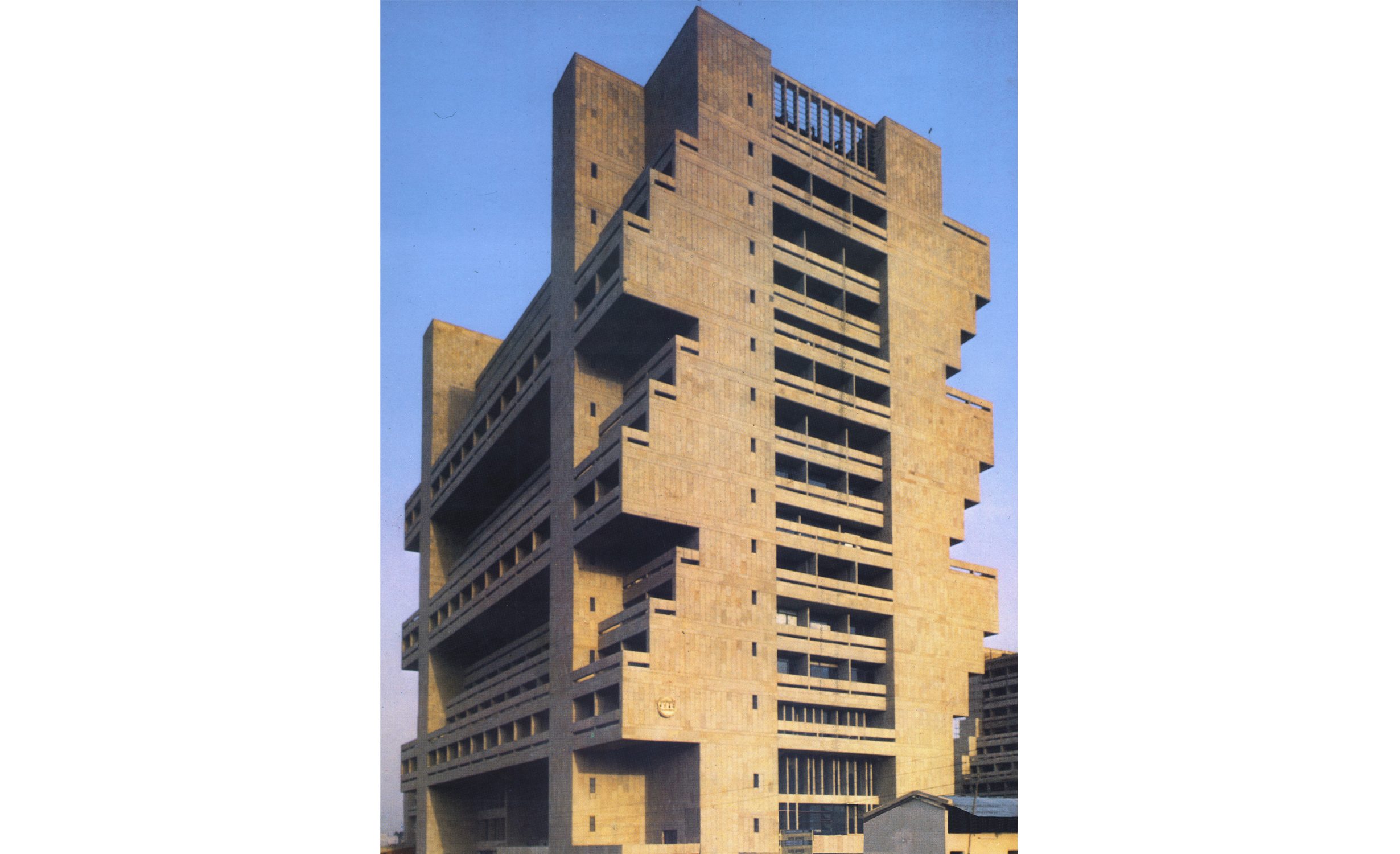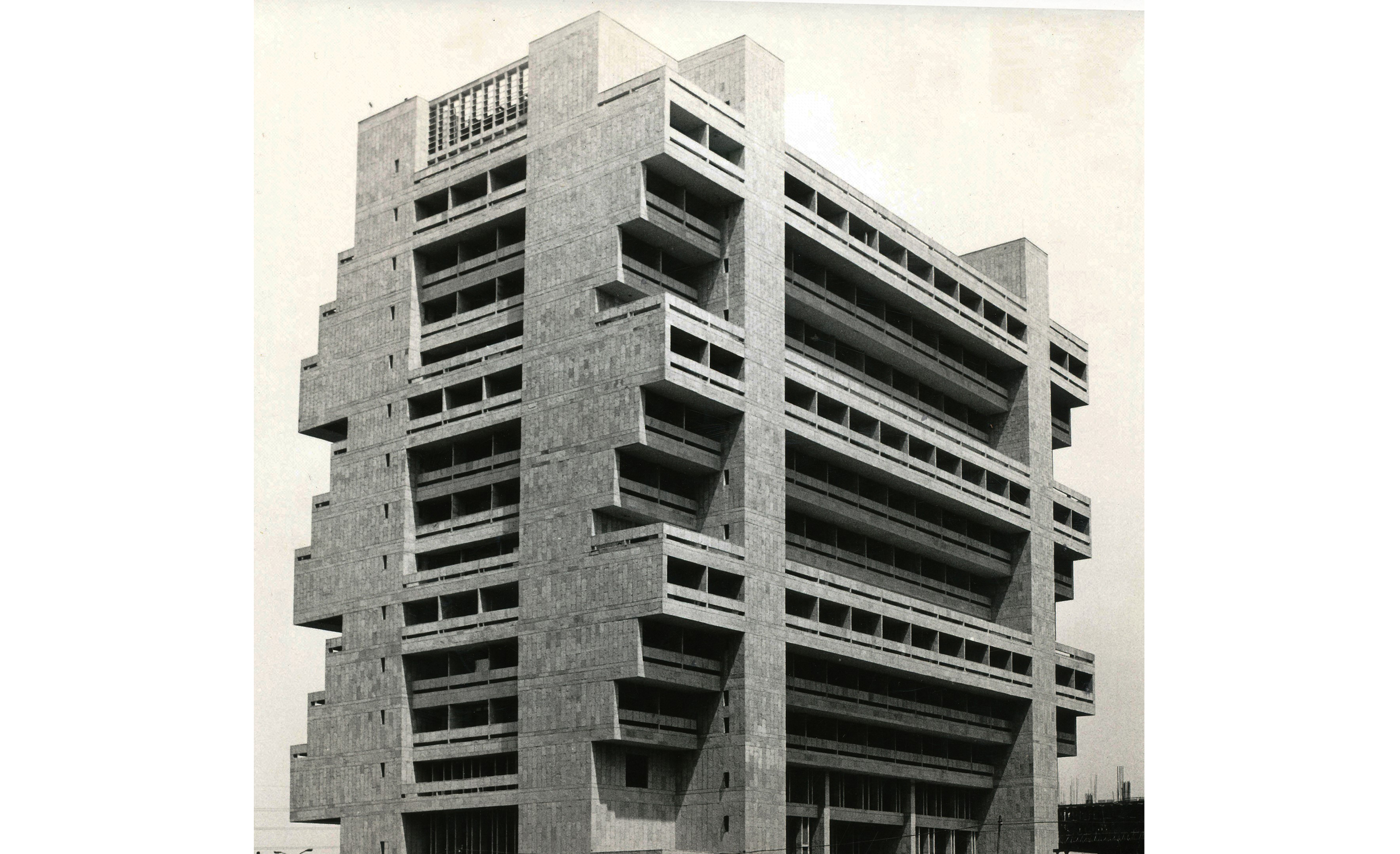ENGINEERS INDIA HOUSE - NEW DELHI
Year : 1978-1983
Location: New Delhi

Description:
The building is the first major office to be constructed within the Bhikaji Cama Bazaar area. The aim was to create an air-conditioned office space which would have the least possible initial outlay and subsequently minimum running expanses.
The form of the building is derived with the aim of saving energy. The service cores are designed in such a manner that they also cut down harsh glare from the south-west, The stepping of floors within the cores and extending different floors to the east and west ends of the building, creates a zone of surface under shadow, thus reducing temperatures. The structural cores along with the extended floors form a giant sunbreaker.
Raj Rewal : Innovative Architecture and Tradition
The Architecture of Raj Rewal
Kenneth Frampton
Some of the most striking structures produced by Rewal during his middle period were high-rise office buildings such as the 15-storey Engineers India House built as part of the Bhikaji Cama Bazaar, New Delhi, in 1978. The four vertical circulation/service cores that double as structural towers at each of its four corners, simultaneously recall both Kahn and Wright and enable Rewal to provide a 54 x 24-metre subdivided loft space on each floor. Long spans between the towers and a concatenation of cantilevered floors, stepping back on one face and forward on the other, would impart to the structure a heavy engineering character as had already been broached in the Delhi Television Centre tower and in the 29-storey State Trading Corporation (STC) Complex that had been completed in New Delhi two years earlier. While the main expression in the Engineers India House had been the cantilevering overhangs, in the STC Complex the emphasis shifted to long span, vierendeel trusses running between the towers at every other floor.
Bibliography:
MIMAR, Architecture in Development, Concept Media Ltd (London), No 18.1985















